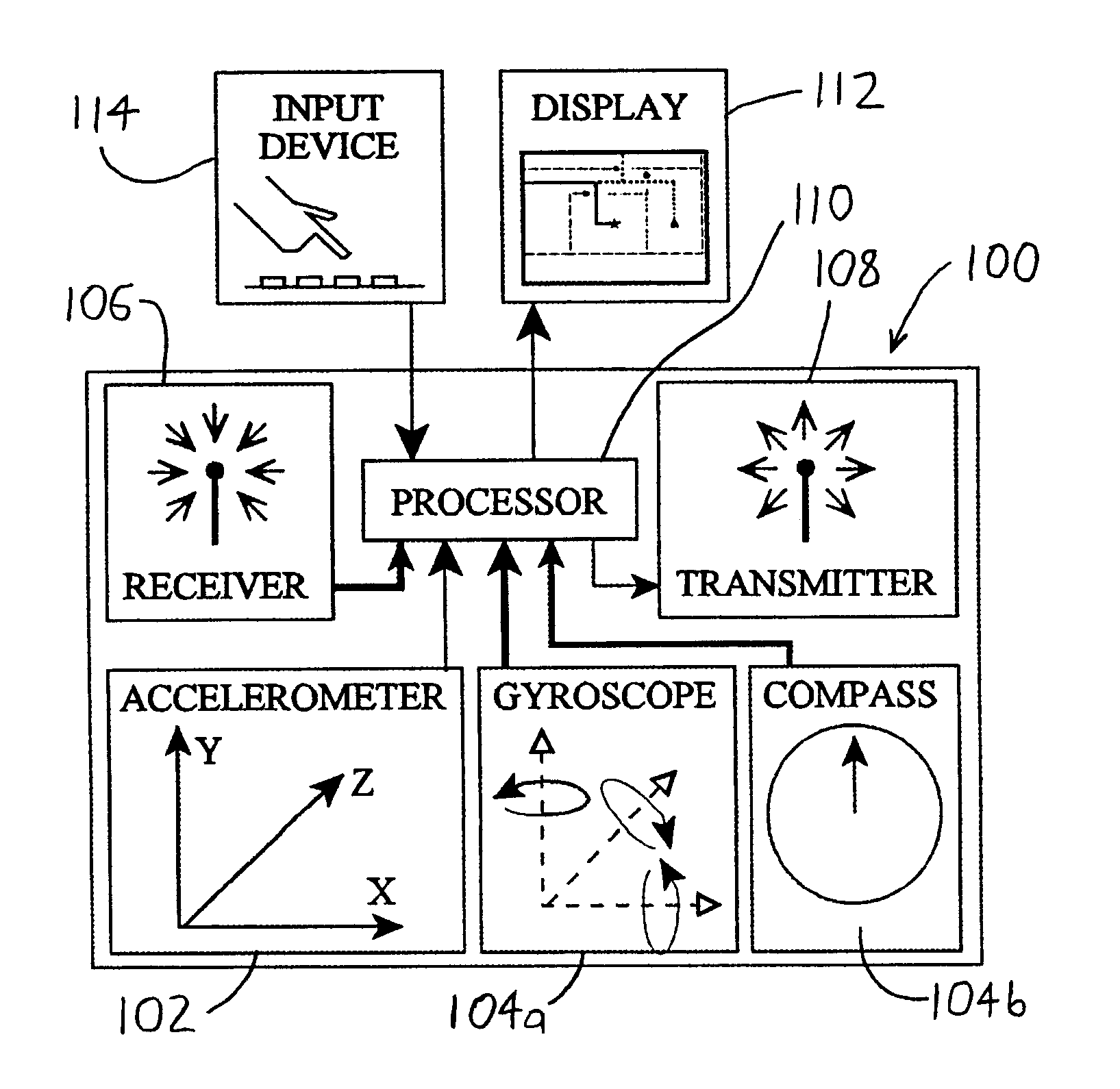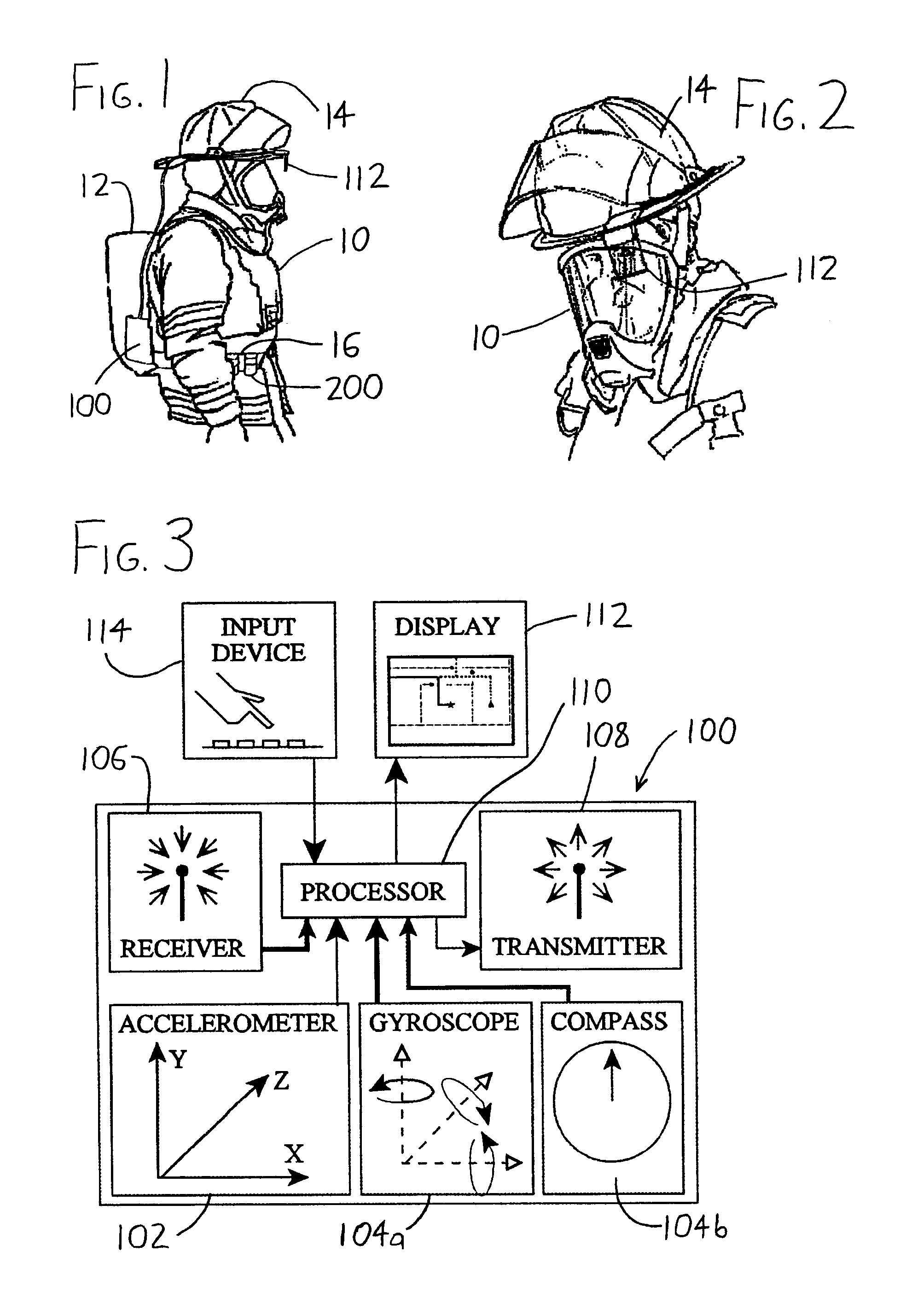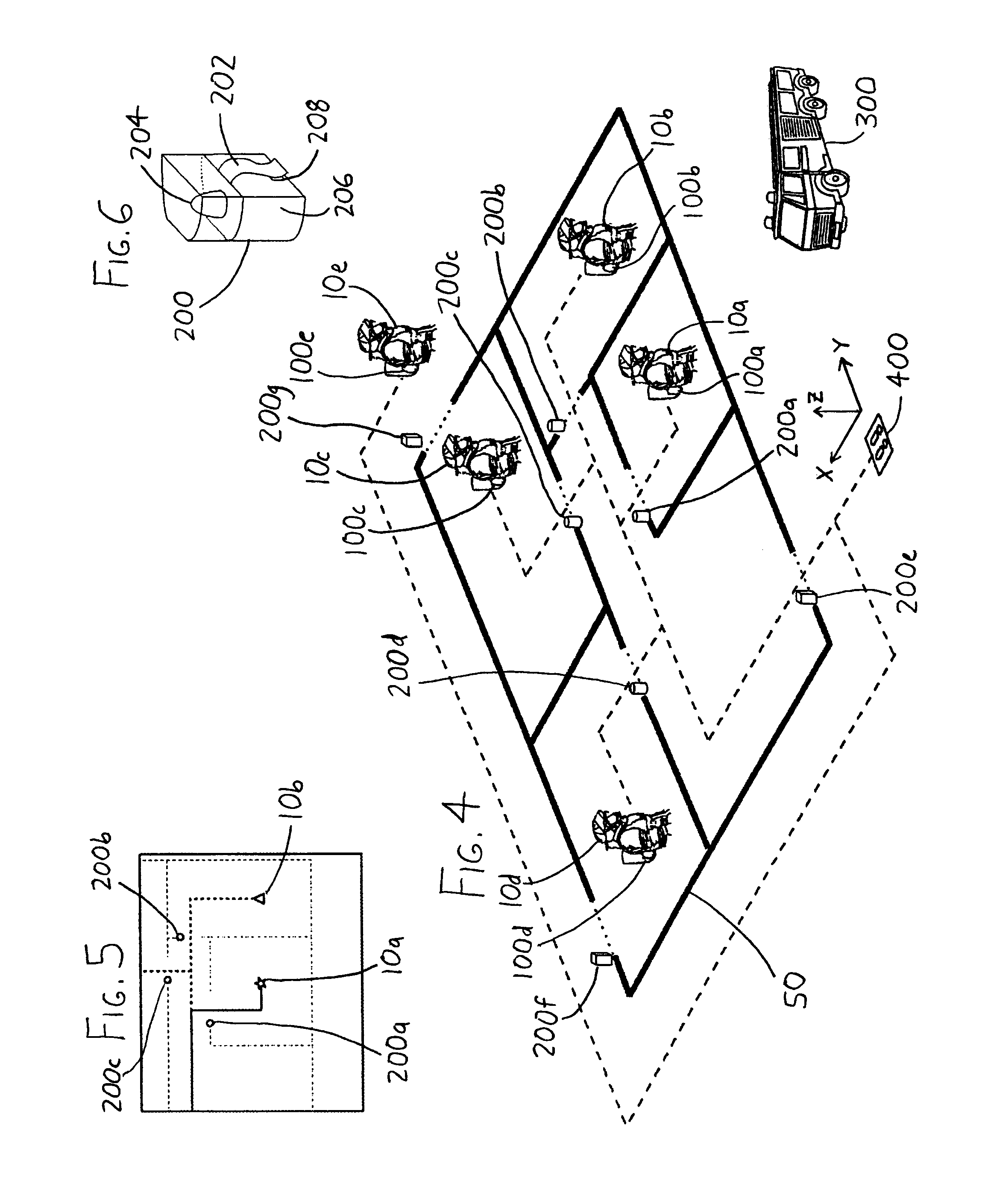Navigation aid for low-visibility environments
a low-visibility environment and navigation aid technology, applied in the field of navigation aids, can solve the problems of obscuring most or all visibility, affecting the visual effect of firefighters, and often facing unfamiliar environments that offer little or no visibility, and achieve the effect of easy visual location
- Summary
- Abstract
- Description
- Claims
- Application Information
AI Technical Summary
Benefits of technology
Problems solved by technology
Method used
Image
Examples
Embodiment Construction
[0016]To elaborate on the foregoing discussion, the exemplary portable detection unit 100 illustrated in FIG. 3 includes an acceleration sensor 102 wherein the measured acceleration data—which is preferably measured along three orthogonal axes—is integrated over time within the processor 110 to obtain position data. Since the axes along which acceleration measurements occur within the acceleration sensor 102 will generally not remain fixed as the user moves about his / her environment, the orientation sensor 104 (i.e., gyroscope 104a and / or compass 104b) can be used to monitor the true orientations of the acceleration measurement axes so that the processor 110 can compute acceleration / position along reference axes (e.g., the XYZ axes of the acceleration sensor 102 at a reference location, such as at the initialization pad 400). As an example, with reference to FIG. 4, as a user stands on a defined location on the initialization pad 400—such as on a set of forward-facing footprints pri...
PUM
 Login to View More
Login to View More Abstract
Description
Claims
Application Information
 Login to View More
Login to View More - R&D
- Intellectual Property
- Life Sciences
- Materials
- Tech Scout
- Unparalleled Data Quality
- Higher Quality Content
- 60% Fewer Hallucinations
Browse by: Latest US Patents, China's latest patents, Technical Efficacy Thesaurus, Application Domain, Technology Topic, Popular Technical Reports.
© 2025 PatSnap. All rights reserved.Legal|Privacy policy|Modern Slavery Act Transparency Statement|Sitemap|About US| Contact US: help@patsnap.com



